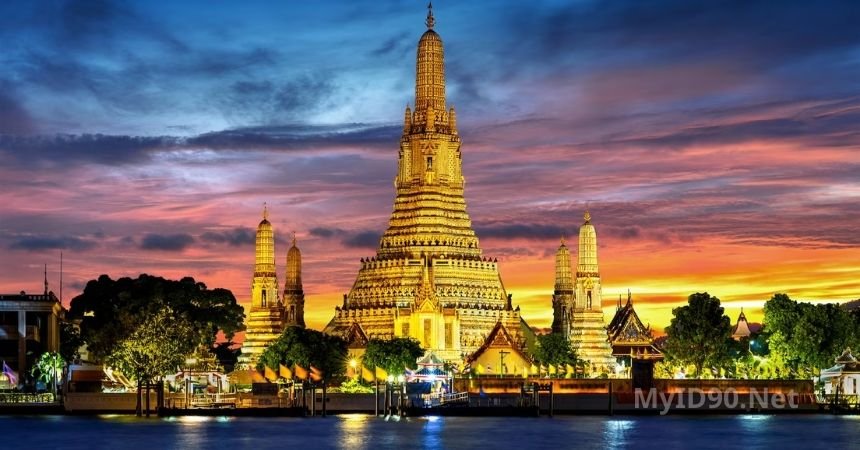Asia is a vast and diverse continent with rich cultures, stunning landscapes, and unforgettable experiences. Planning a trip to Asia can seem daunting, but with a step-by-step approach, you can design an incredible adventure that suits your preferences and budget. This guide will walk you through everything you need to know, from choosing destinations to making your trip stress-free and memorable.
Step 1: Choose Your Destinations

Asia offers a wide variety of destinations, from bustling cities to serene countryside. Deciding where to go depends on your interests, budget, and time.
Popular Regions in Asia:
- Southeast Asia: Thailand, Vietnam, Indonesia, and Cambodia for tropical beaches, vibrant street markets, and cultural landmarks.
- East Asia: Japan, China, and South Korea for modern cities, ancient traditions, and natural wonders.
- South Asia: India, Nepal, and Sri Lanka for history, spirituality, and diverse landscapes.
- Central Asia: Kazakhstan and Uzbekistan for unique cultural heritage and the Silk Road.
Tip: Use tools like Google Maps, travel forums, or guidebooks to research each country’s highlights.
Step 2: Determine the Best Time to Visit

Asia’s weather varies significantly depending on the region and season. Check the weather patterns for your desired destinations to avoid unpleasant surprises.
Seasonal Insights:
- Winter (November–February): Ideal for tropical countries like Thailand and Vietnam.
- Spring (March–May): Great for cherry blossoms in Japan and mild temperatures in China.
- Monsoon (June–October): A mixed season; some areas like Bali remain suitable for travel, but others may experience heavy rainfall.
Pro Tip: Avoid peak tourist seasons for lower costs and fewer crowds.
Step 3: Set a Budget
Your budget will shape the duration, accommodation, and experiences of your trip.
Budget Components:
- Flights: Use platforms like Skyscanner or Google Flights to find the best deals.
- Accommodation: Research options from luxury resorts to budget hostels on sites like Booking.com or Airbnb.
- Food: Street food in Asia is both affordable and delicious, while fine dining options are also available.
- Transportation: Factor in local transport like tuk-tuks, buses, and trains.
Example Costs (average per day):
- Budget travel: $30–$50.
- Mid-range: $80–$150.
- Luxury: $200+.
Step 4: Plan Your Itinerary
A well-structured itinerary ensures you make the most of your trip without feeling overwhelmed.
Sample Itinerary for Southeast Asia (14 Days):
- Day 1–3: Bangkok, Thailand – Explore temples and markets.
- Day 4–6: Chiang Mai – Visit elephant sanctuaries and enjoy night bazaars.
- Day 7–10: Siem Reap, Cambodia – Discover the Angkor Wat complex.
- Day 11–14: Bali, Indonesia – Relax on beaches and explore Ubud’s cultural scene.
Tips for Itinerary Building:
- Limit travel to 1–2 destinations per week to reduce exhaustion.
- Use travel blogs and YouTube videos for local insights.
Step 5: Secure Necessary Documents
Traveling to Asia often requires some paperwork. Prepare these documents in advance:
- Passports: Ensure your passport has at least six months of validity.
- Visas: Check visa requirements for each country on your itinerary. Many Asian countries offer e-visas or visa-on-arrival.
- Travel Insurance: Protect yourself against unforeseen events like cancellations or medical emergencies.
Step 6: Book Flights and Accommodation
Booking Flights:
- Look for round-trip deals or multi-city tickets if visiting several destinations.
- Sign up for fare alerts from apps like Hopper or Kayak.
Booking Accommodation:
- Prioritize location and reviews when choosing accommodations.
- Combine types of stays: hotels, hostels, homestays, or unique options like ryokans in Japan.
Step 7: Pack Smart
Packing for Asia depends on your destinations and activities.
Essentials to Pack:
- Lightweight and breathable clothing for tropical areas.
- Modest attire for temples and religious sites.
- Comfortable walking shoes.
- Power adapter (check regional plugs).
- Medication and a travel first-aid kit.
Pro Tip: Use packing cubes to save space and stay organized.
Step 8: Navigate Asia Efficiently

Getting around Asia can be part of the adventure.
Transportation Tips:
- Local Flights: Ideal for long distances between countries.
- Trains: Perfect for scenic journeys, especially in Japan and India.
- Public Transport: Affordable and reliable in most cities.
- Ride-Sharing Apps: Grab and Gojek are popular in Southeast Asia.
Tip: Download offline maps and translation apps for convenience.
Step 9: Embrace Cultural Differences
Asia is incredibly diverse, and understanding cultural norms will enrich your experience.
Cultural Tips:
- Learn Basic Phrases: A few words in the local language can go a long way.
- Respect Local Customs: Follow dress codes, especially at religious sites.
- Try Local Food: Step out of your comfort zone and savor authentic dishes.
Step 10: Enjoy and Document Your Trip

Traveling to Asia offers countless photo opportunities and moments to cherish.
Tips for Enjoying the Journey:
- Stay present and immerse yourself in the culture.
- Balance sightseeing with relaxation.
- Keep a travel journal or vlog to document your experiences.
Conclusion
Planning a trip to Asia may seem challenging, but breaking it down into clear steps makes it manageable and enjoyable. With its diversity and allure, Asia promises an adventure that caters to every type of traveler. From vibrant cities to tranquil retreats, your journey will leave you with memories to last a lifetime.
Start planning your Asian adventure today, and experience a world of wonders!


This guide is incredibly helpful! I love the step-by-step approach to planning a trip to Asia!
The tips on choosing destinations are great! It’s nice to have such a variety of options to consider!
I appreciate the budgeting advice—it’s always tricky to figure out how much to spend!
The suggested itinerary for Southeast Asia looks amazing! I’ll definitely use it as a reference!
Thanks for the reminder about travel insurance! It’s so important to be prepared for unexpected events!
The packing tips are spot on! I always struggle with what to bring for different climates!
I love how you emphasized cultural awareness! Understanding local customs will enhance the travel experience!
Downloading offline maps is such a smart tip! It really helps when navigating new places!